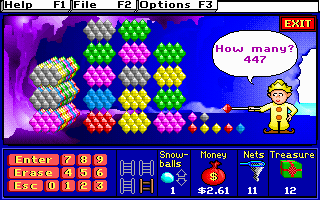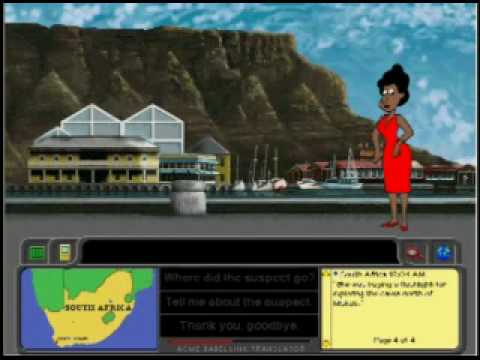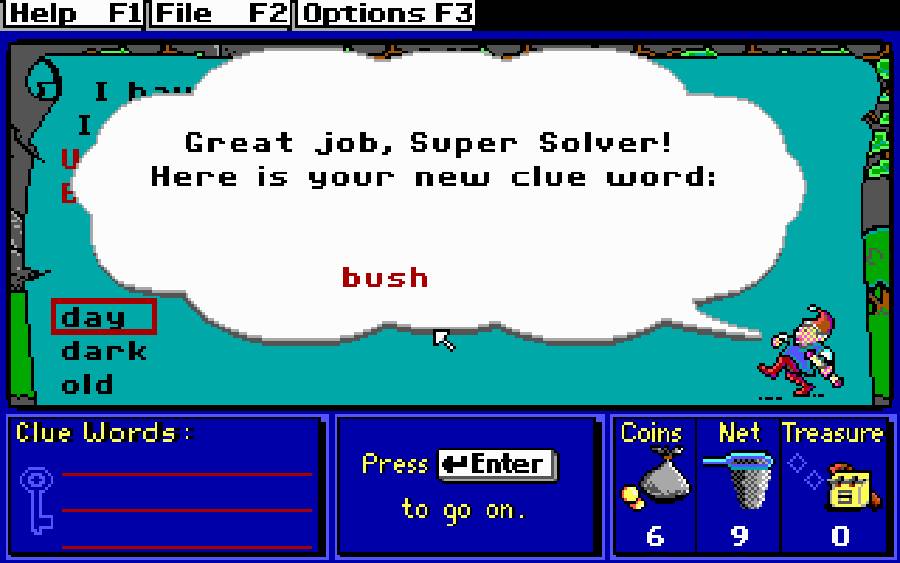The 90s were a far more adventurous and creative period in the video game industry, when developers were always trying new and exciting ways of creating entertaining video games. One such brave genre is that of the educational video game, which helped children learn the basics of math, grammar, spelling, history, and geography. It is a genre that has dwindled since the early 2000s, and it needs to make a comeback.
The difficulties of making fun & educational video games
Developing a fun video game is no small task by any stretch of the imagination, no matter the genre. Developing an educational video game that is also fun and engaging is even more challenging.
The Learning Company was one of the leading developers of educational games in the 90s. They developed classics such as the Reader Rabbit series, the Cluefinders series, the Super Seekers series, and the Carmen Sandiego series from 1998 onward. Despite being exceptional at teaching, educational video games always lacked in gameplay, resulting in extreme repetition. Despite the problem-solving getting harder as the player progressed, it was still the same thing over and over again.

This resulted in children getting bored of the games very quickly; myself included at the time. In later games, a reward system was put in place. After completing each run, especially in the Super Seeker series, the player was rewarded with a toy. But putting a digital toy on top of digital shelving isn’t quite enough to keep a player engaged in the game, nor encourage them to keep playing.
It is this lack of gameplay and the inability to keep the player’s attention which ultimately has led to the downfall of the genre. It remains one of the most challenging obstacles when developing such a game, even with the advancement in technology since the 90s.
How educational games helped me
I have been an avid gamer since a young age, starting with systems such as the Commodore 64 and the Amiga A600. It mattered not what the game was — if it were in any shape or form a video game, I would play it. Educational video games were very much a win-win scenario; I got to play a video game and learn at the same time.
Despite never struggling to any substantial degree with a particular subject, I nevertheless had my strengths and weaknesses in school. Grammar and spellings were not always my strong points, and games like Treasure Mountain greatly helped with that.
Throughout the game, the player has to read, solve logic problems, basic maths and correct grammatical errors to progress throughout the stage. As the player progresses, the difficulty and complexity of the problems increase.
The logic problem solving starts off with using individual letters and having to find another word with the same letter but progress into using certain words correctly such as they’re or their. The grammatical errors also grow in difficulty in similar fashion. Not only did it allow me to learn at a level appropriate to that of my school year, but I could also go beyond that.
This educational game allowed me to learn beyond what I was learning in a particular academic year, thus preparing me for more challenging problem solving in later years. I still firmly believe that my ability to near instantly calculate simple mathematics — such as addition, subtraction, multiplication and division — is due in large part to games like Treasure Mathstorm!

In my teenage years, geography was my strongest subject, next to English. This is most likely due to spending quite a bit of time playing Where in the World is Carmen Sandiego? The game encourages the player to use clues given to them to find the next country they need to travel to so they can catch up with one of Carmen’s thieves, using the in-game geographical encyclopedia.
Having to read about the many different countries and cultures of the world to figure out which country the thief has fled to allowed me to learn a lot. It was something that stuck with me even years later and helped me greatly in geography class.

Some of my best subjects in school were those covered by various educational video games, while I didn’t do so well in other subjects that weren’t. I find it difficult to put simply it down to coincidence that I excelled at the subjects covered by those games, and still believe they were an important part of it.
Why do educational video games need to make a comeback?
It isn’t just myself who such games have helped when it comes to school. Many of the teachers we had encouraged the children to play such video games if they enjoyed doing so. Some fellow students also played the games and excelled in some of the subjects covered in them, validating that they do indeed teach.
While the games I played back in the 90s lacked in gameplay and got repetitive after a while, a lot of it could be chalked up to the limitations of video game development at the time. The technological advancement in video games since then opens up a new world of nearly endless possibilities when it comes to educational games.
With the right people, creativity and imagination, there truly could be some fantastic games developed that focus on educating children on the various subjects, while making it fun to learn.
Though there is always the issue of budget and finding the money to create such games, crowdfunding sites such as Kickstarter prove that if people want a product, they are more than willing to fund it. As a parent myself now, if I were to see a crowdfunding campaign for such video games, I would make a contribution in a heartbeat — as I am sure many others would.
I can’t imagine such a crowdfunding campaign failing, as there is nothing to lose from it. The creators win by being able to develop the game(s), the children win because they learn while having fun doing so, and the parents win because their children are learning. There truly is no better time for the genre to make a comeback.
Image Sources: Abandonia, Wikipedia and GameFAQs








Published: Mar 23, 2016 08:00 am